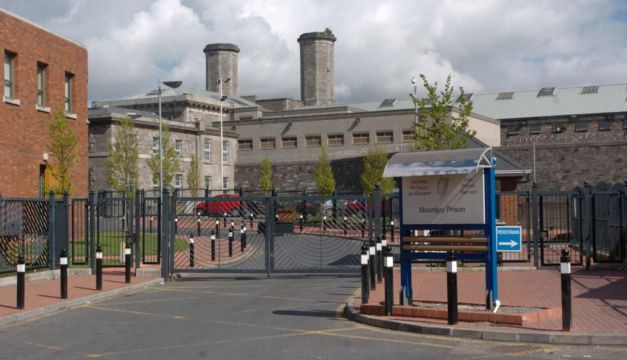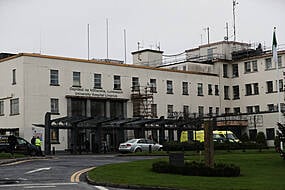A Mountjoy prisoner "lured" a fellow inmate to his cell where he stamped on his head and caused his death in a "vicious and unprovoked assault", a prosecution barrister has told a murder trial at the Central Criminal Court.
Michael Delaney SC, for the Director of Public Prosecutions, told the jury of nine men and three women that David Dunne intended to cause serious injury or death when he assaulted Robert O'Connor and should be found guilty of murder.
Mr Dunne's defence barrister Brendan Grehan SC said the killing was not intentional or planned but "came about in the circumstances of the moment". Mr Grehan said that if his client is guilty of murder simply because he struck the deceased's head, then there are "an awful lot of attempted murderers" out there.
Counsel added: "People get kicked or struck in the head all the time and nobody suggests they were out to commit murder, but if somebody does die there is an immediate focus on the result and a lot of the evidence gets reinterpreted in that regard."
Mr Grehan asked the jury not to look at the result and work backwards to find the necessary intent for murder or to conclude that if a person assaults or stamps someone's head they must have intended to cause serious injury or death.
David Dunne (40), with a last address in Summerhill, Dublin 1, has pleaded not guilty to the murder of Robert O’Connor on July 29th, 2022, at Mountjoy Prison, North Circular Road, Dublin 7.
Mr Delaney told the jury that Mr O'Connor died from blunt force trauma to the head by either punches, kicking or stamping.
A neuropathological exam showed that Mr O'Connor's brain was subjected to a rotational force that caused a shearing of the nerve ends, he said.
Those injuries, counsel said, were caused by a "vicious and unprovoked assault" by the accused. Counsel pointed to the evidence of one prison officer who said he saw Mr Dunne stamp "more than once" on Mr O'Connor's head before he could intervene.
Mr Delaney said CCTV evidence suggests "an element of coordination" in the interactions visible between Mr Dunne and three other prisoners in the minutes before the fatal encounter.
Counsel said the footage suggests that when Mr O'Connor arrived on Mr Dunne's wing of the prison, the accused signalled to one of those prisoners. Once Mr O'Connor and the accused went inside the accused's cell, Mr Delaney said the others followed as if they "knew something was going down".
Mr Delaney said the CCTV undermines Mr Dunne's claim during garda interviews that he invited the deceased to his cell for a "friendly chat" about an assault on Mr O'Connor that occurred two days previously.
It further undermined Mr Dunne's claim in garda interviews that he acted in self-defence after being attacked by the deceased, counsel said.
"The objective, reliable evidence shows he [the accused] lured Robert O'Connor into that cell for the purpose of attacking him," Mr Delaney said.
Counsel accused Mr Dunne of giving a self-serving account that lacks credibility in a letter he wrote the night following the fatal assault.
In that letter, Mr Dunne said that when they entered the cell, Mr O'Connor got defensive, believing that Mr Dunne was involved in the previous assault. Mr Dunne wrote that Mr O'Connor hit him first but then fell to the ground when Mr Dunne punched back. Mr Dunne described the deceased holding his leg as Mr Dunne pushed him away with his foot.
During garda interviews, Mr Delaney said the accused's account "evolved" until in his final interview he demonstrated a "stamp" that counsel said could easily have caused the injuries sustained by Mr O'Connor.
Mr Delaney further suggested that the accused raised "red herrings" in those interviews, such as that Mr O'Connor was "out of it on drugs and couldn't be reasoned with". Toxicology showed that he had only therapeutic doses of prescribed drugs, counsel said.
Mr Grehan told the jury that they have to apply the proper legal principles, including the presumption of innocence, "despite whatever distaste you might have for Mr Dunne, where Mr Dunne has not one but many previous convictions... and spent most of his life in and out of prison."
He urged the jury to ignore "speculation" by the prosecution about signals between prisoners and a "wide blown conspiracy" and to look at the hard evidence. "Where can it be made out in hard facts that this was a planned killing?" he asked.

Mr Grehan said nobody, including the accused, could have known that Mr O'Connor would come to that landing at that time.
The last place Mr Dunne would choose for an attack would be his own cell, which is watched by multiple CCTV cameras covering all entrances and exits and where two prison officers are stationed nearby, Mr Grehan said.
Mr Grehan said the killing was not an intentional or planned action but was "in fact a reaction" without any premeditation. The lack of blood on Mr Dunne's footwear suggests he did not kick the deceased more than once. The appropriate verdict, counsel said, is not guilty of murder but guilty of manslaughter.
Ms Justice Mary Ellen Ring will complete her charge to the jury before they begin their deliberations.







